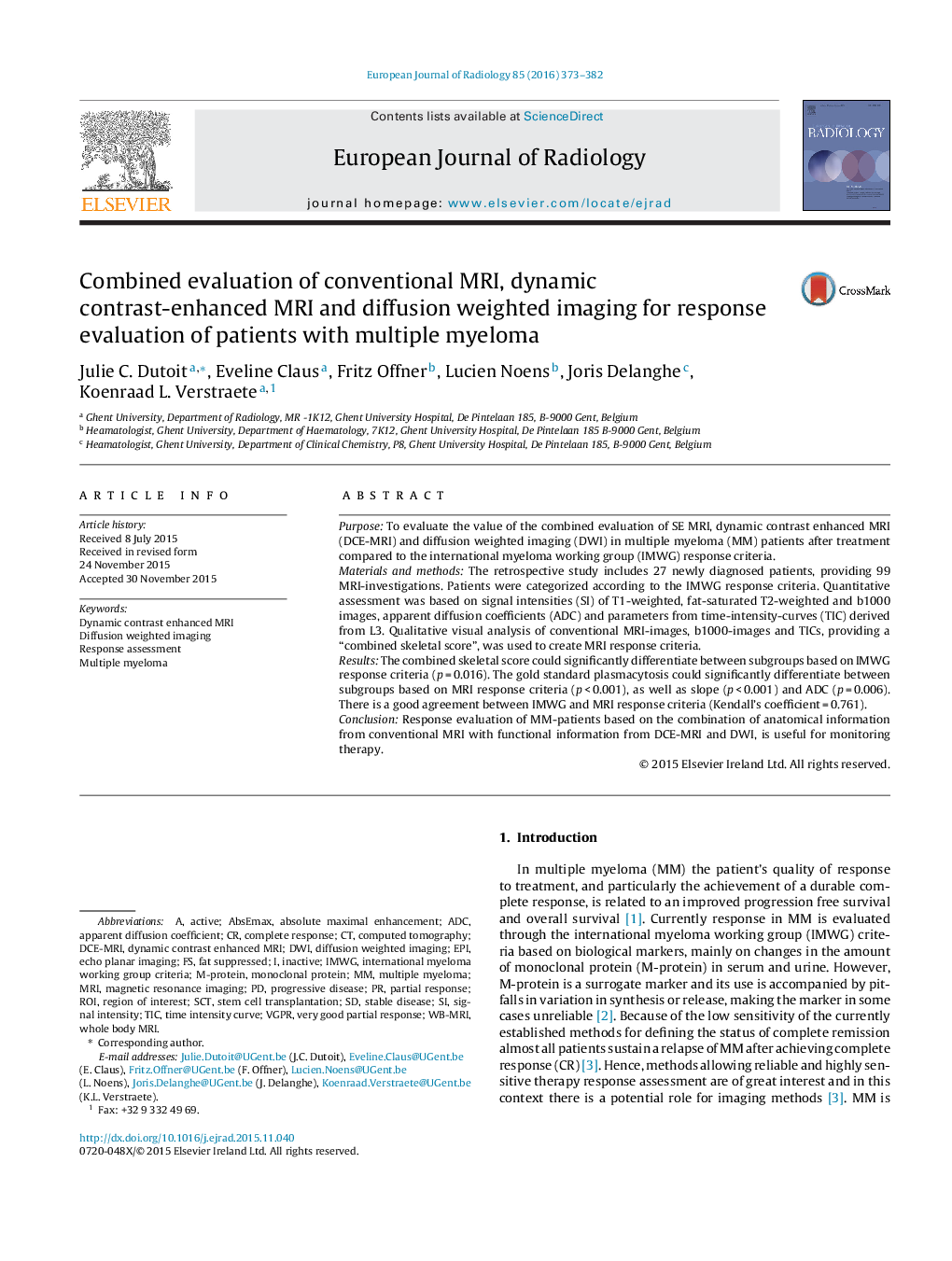| Article ID | Journal | Published Year | Pages | File Type |
|---|---|---|---|---|
| 4225078 | European Journal of Radiology | 2016 | 10 Pages |
PurposeTo evaluate the value of the combined evaluation of SE MRI, dynamic contrast enhanced MRI (DCE-MRI) and diffusion weighted imaging (DWI) in multiple myeloma (MM) patients after treatment compared to the international myeloma working group (IMWG) response criteria.Materials and methodsThe retrospective study includes 27 newly diagnosed patients, providing 99 MRI-investigations. Patients were categorized according to the IMWG response criteria. Quantitative assessment was based on signal intensities (SI) of T1-weighted, fat-saturated T2-weighted and b1000 images, apparent diffusion coefficients (ADC) and parameters from time-intensity-curves (TIC) derived from L3. Qualitative visual analysis of conventional MRI-images, b1000-images and TICs, providing a “combined skeletal score”, was used to create MRI response criteria.ResultsThe combined skeletal score could significantly differentiate between subgroups based on IMWG response criteria (p = 0.016). The gold standard plasmacytosis could significantly differentiate between subgroups based on MRI response criteria (p < 0.001), as well as slope (p < 0.001) and ADC (p = 0.006). There is a good agreement between IMWG and MRI response criteria (Kendall’s coefficient = 0.761).ConclusionResponse evaluation of MM-patients based on the combination of anatomical information from conventional MRI with functional information from DCE-MRI and DWI, is useful for monitoring therapy.
